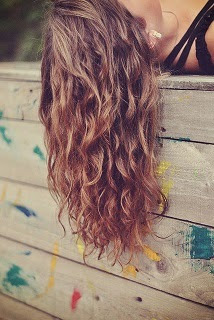
|
| [1] |
What causes oily hair?
If you have very oily hair, chances are you also have oily skin. These conditions go hand in hand because oil is produced by the sebaceous glands of your skin and the oil in your hair actually comes from your scalp.
Some people simply have oilier skin and hair due to their genetics, whilst others suffer from the opposite condition of excessive dryness. It really is a condition where just enough is beneficial, while too much or too little isn't optimal.
Treating oily hair
Treating oily hair is rather simple in most cases. Often the simplest cure is to merely change your shampoo or wash your hair more often.
If you use a shampoo that is designed for coloured hair or mild cleansing, this isn't the best option for oily hair. These types of shampoos don't clean the hair as effectively. In the case of colored hair shampoo, this has the benefit of causing less fading because there is less actual shampooing taking place, but it won't remove enough oil to properly clean your hair.
You don't have to wash your hair every day, but where oily hair is out of control, this is also another simple way to help cut down the problem if you have the time. If you don't take the time, ensure that you shampoo your hair at least twice whenever you wash it and then condition only with a small amount of a light conditioner.
One shampoo is not enough for oily hair. In fact, the best way to shampoo hair is to shampoo it at least twice before conditioning. The first shampoo breaks the surface tension and takes some of the oil and product out, but it's the second shampoo that actually cleans the hair properly and takes out the majority of oil and debris.

|
| [2] |
Clarifying shampoo
If you have very oily hair, swapping your shampoo with a clarifying shampoo can help alleviate the problem and cut down on oil much more effectively than milder shampoos can.
After using a clarifying shampoo, you should still condition your hair, but only use a small amount and use a mild conditioner where possible. The conditioner adds a small amount of oil to your hair in the form of moisturiser, but this oil actually detangles and benefits your hair because it is a different consistency and texture to sebaceous oil.
This is comparable to the difference between natural oil and a facial moisturiser. Even if you have oily skin and wash it to remove all the oil, you would still follow up with a moisturiser for the best results. Your hair is the same sort of situation.
Dry shampoo

|
| [3] |
If this is your hair, a dry shampoo is a good option for a few reasons. Most importantly, it can be used to reduce oil and clean your hair without actually getting it wet. This is convenient and saves time. Having to wash your hair several times in a single day is not really anyone's favourite pastime.
However, because of the way these shampoos work they can often add volume to your hair and give a matte finish. In thick hair, this results in too much body, whilst any hair type can suffer from the mattifying side effect and tangle up as a result. It's best to only use dry shampoo if absolutely necessary because of these potential problems, and only in very oily hair.
Have a question about how to treat oily hair, or an oily conundrum of your own that you need to solve? Leave a comment for tailored advice...
No comments:
Post a Comment